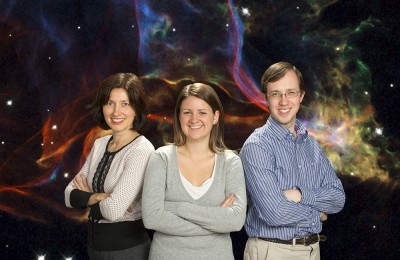The School of Physics put out a call for students interested in a six-week paid astrophysics research internship during a recent vacation period, and chose Fraser-McKelvie. Dr. Kevin Pimbblet, lecturer in the School of Physics put the magnitude of the discovery in context by explaining that scientists had been hunting for the Universe's missing mass for decades.
Astrophysicists also predicted that the mass would be low in density, but high in temperature - approximately one million degrees Celsius. This meant that, in theory, the matter should have been observable at X-ray wavelengths, which Amelia Fraser-McKelvie's discovery has proved correct.
X-ray observations provide important information about physical properties of large-scale structures, which can help astrophysicists better understand their true nature. Until now, they had been making deductions based only on numerical models, so the discovery is a huge step forward in determining what amount of mass is actually contained within filaments.

Dr. Jasmina Lazendic-Galloway, Amelia Fraser-McKelvie and Dr. Kevin Pimbblet. Credit: Monash University
"It was thought from a theoretical viewpoint that there should be about double the amount of matter in the local Universe compared to what was observed. It was predicted that the majority of this missing mass should be located in large-scale cosmic structures called filaments - a bit like thick shoelaces," said Pimbblet.
Still a year away from undertaking her Honours year, which she will complete under the supervision of Dr Pimbblet, Fraser-McKelvie is now being hailed as one of Australia's most exciting young students - not many young undergraduates get published in Monthly Notices of the Royal Astronomical Society.
Pimbblet said that he had under his tuition a very talented student who excelled in performing the breakthrough research. "She has managed to get a refereed publication accepted by one of the highest ranking astronomy journals in the world as a result of her endeavours. I cannot underscore enough what a terrific achievement this is."
He's being modest, of course. In the world of modern science, it takes mentors willing to take a chance and help young people, and then give them credit, which is not always the case. Pimbblet and Dr. Jasmina Lazendic-Galloway are to be commended for fostering an atmosphere where bright minds can shine, even in an internship position.
Paper: Amelia Fraser-McKelvie, Kevin A. Pimbblet, Jasmina S. Lazendic, 'An estimate of the electron density in filaments of galaxies at z~0.1', http://arxiv.org/abs/1104.0711






Comments